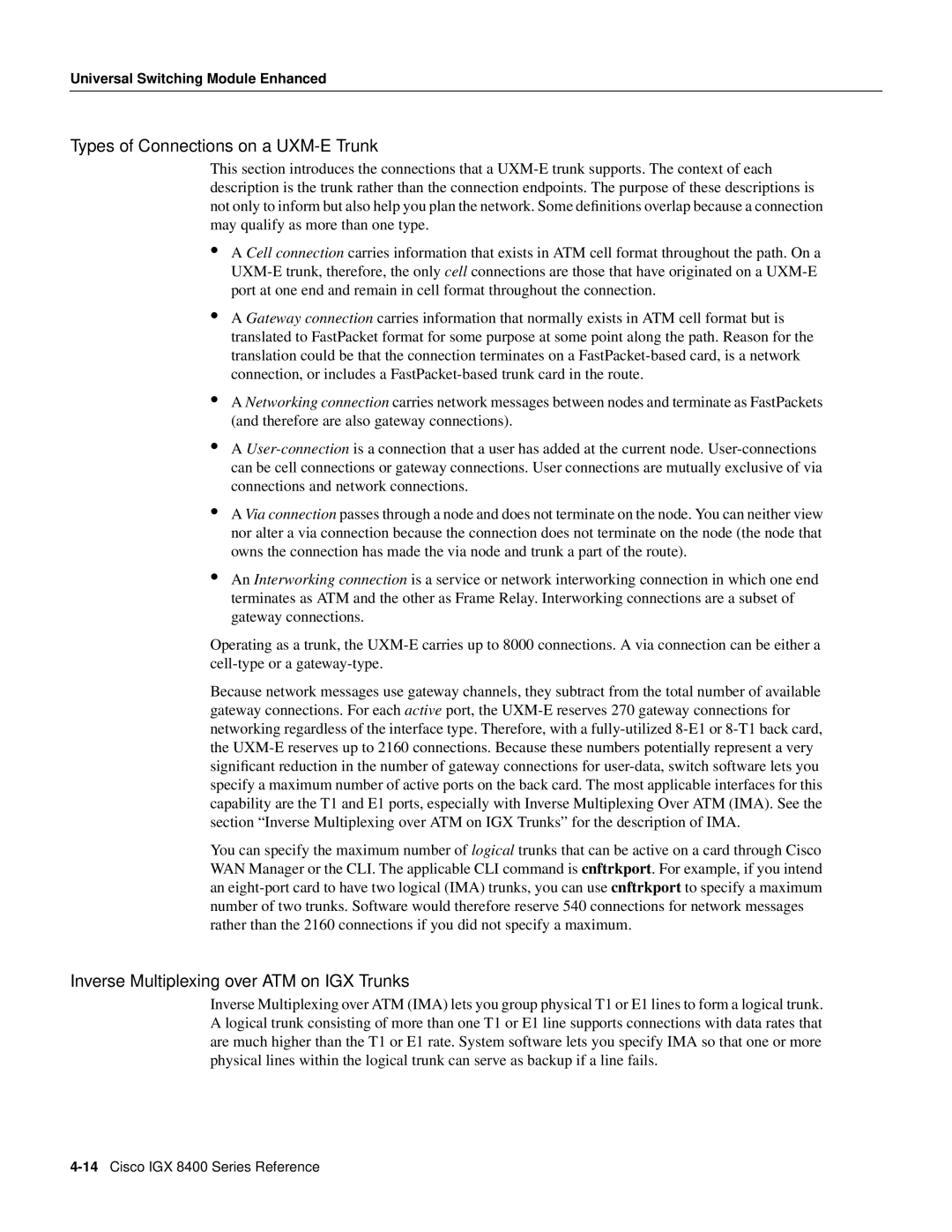Universal Switching Module Enhanced
Types of Connections on a UXM-E Trunk
This section introduces the connections that a
•A Cell connection carries information that exists in ATM cell format throughout the path. On a
•A Gateway connection carries information that normally exists in ATM cell format but is translated to FastPacket format for some purpose at some point along the path. Reason for the translation could be that the connection terminates on a
•A Networking connection carries network messages between nodes and terminate as FastPackets (and therefore are also gateway connections).
•A
•A Via connection passes through a node and does not terminate on the node. You can neither view nor alter a via connection because the connection does not terminate on the node (the node that owns the connection has made the via node and trunk a part of the route).
•An Interworking connection is a service or network interworking connection in which one end terminates as ATM and the other as Frame Relay. Interworking connections are a subset of gateway connections.
Operating as a trunk, the
Because network messages use gateway channels, they subtract from the total number of available gateway connections. For each active port, the
You can specify the maximum number of logical trunks that can be active on a card through Cisco WAN Manager or the CLI. The applicable CLI command is cnftrkport. For example, if you intend an
Inverse Multiplexing over ATM on IGX Trunks
Inverse Multiplexing over ATM (IMA) lets you group physical T1 or E1 lines to form a logical trunk. A logical trunk consisting of more than one T1 or E1 line supports connections with data rates that are much higher than the T1 or E1 rate. System software lets you specify IMA so that one or more physical lines within the logical trunk can serve as backup if a line fails.
